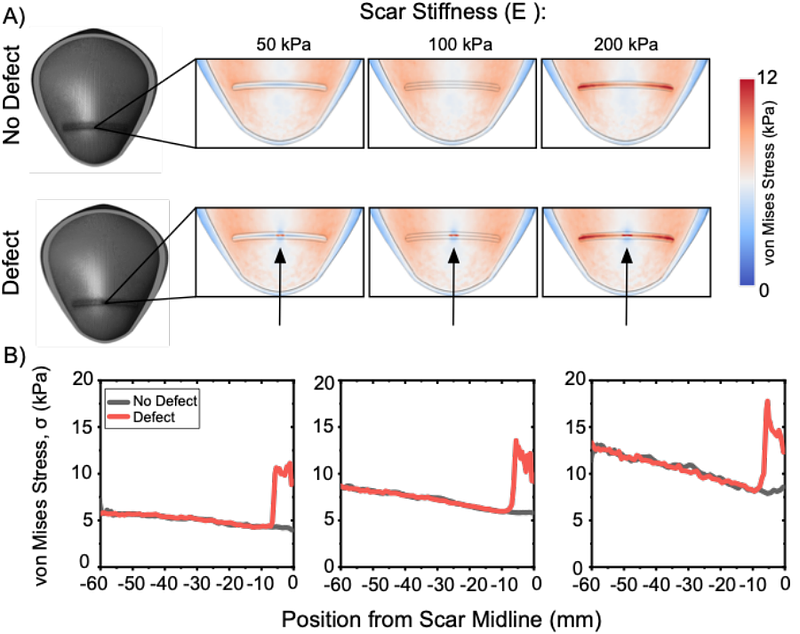Biomechanical Modeling of Cesarean Section Scars and Scar Defects

Biomechanical Modeling of Cesarean Section Scars and Scar Defects
Scott, A. K.; Louwagie, E. M.; Myers, K. M.; Oyen, M. L.
AbstractUterine rupture is an intrinsically biomechanical process associated with high maternal and fetal mortality. A previous Cesarean section (C-section) is the main risk factor for uterine rupture in a subsequent pregnancy due to tissue failure at the scar region. Finite element modeling of the uterus and scar tissue presents a promising method to further understand and predict uterine ruptures. Using patient dimensions of an at-term uterus, a C-section scar was modeled with an applied intrauterine pressure to study how scars affect uterine stress. The scar positioning and uterine thickness were varied, and a thickness defect was incorporated into the scar region. The modeled stress distributions confirmed clinical observations as the increased regions of stress due to scar positioning, thinning of the uterine walls, and the presence of a defect are consistent with clinical observations of features that increase the risk of uterine rupture.